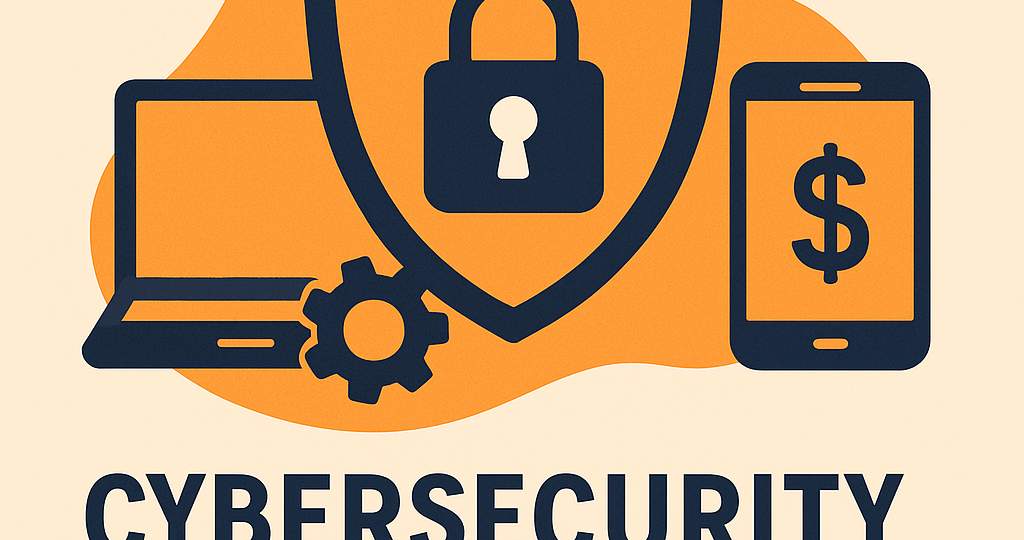
Cybersecurity for Small Businesses: Protecting Your Digital Assets on a Budget
Introduction
In today’s digital world, small businesses face growing threats from cyberattacks. Hackers often target small companies because they know resources and security measures may be limited. But even with a tight budget, it’s possible to protect your business from online threats. With the right steps and smart planning, you can keep your data safe without spending a fortune.
Why Cybersecurity Matters for Small Businesses
Many small business owners believe that cybercriminals only go after large companies. Unfortunately, that’s not true. Small businesses are often seen as easy targets. A single data breach can lead to lost money, damaged customer trust, and even legal trouble.
That’s why it’s important to take cybersecurity seriously—no matter the size of your business. It’s not just about protecting information. It’s about protecting your future.
Start with a Risk Assessment
The first step to building better security is understanding where your weaknesses are. Look at how your business stores data, who has access to it, and how it’s protected. Check computers, phones, email systems, websites, and cloud services.
This doesn’t require expensive tools. You can do it yourself or ask a tech-savvy employee to help. The goal is to find and fix obvious risks before they become problems.
Educate Your Team
Human error is one of the main causes of cyber incidents. That’s why it’s essential to train your employees. Teach them how to recognize suspicious emails, avoid unsafe websites, and create strong passwords.
Hold short, regular training sessions. Even basic knowledge can prevent many cyberattacks. Make it part of your workplace culture to take digital safety seriously.
Use Strong Passwords and Two-Factor Authentication
Passwords are your first line of defense. Encourage employees to use strong, unique passwords for every account. Avoid using the same password on multiple sites.
Also, set up two-factor authentication wherever possible. This adds an extra step to logging in—like entering a code sent to your phone—and makes it much harder for hackers to get in.
Keep Your Software Updated
Outdated software is one of the easiest ways for hackers to gain access. Make sure all computers, apps, and systems are updated regularly. These updates often include security patches that fix known issues.
Turn on automatic updates when possible, so you don’t have to remember to do it manually.
Install Basic Security Tools
You don’t need to buy the most expensive antivirus software to protect your business. There are many reliable and affordable options available. At a minimum, install antivirus and firewall protection on all devices.
Firewalls help block unwanted connections, and antivirus programs detect and remove threats like viruses and malware.
Backup Your Data Regularly
No matter how careful you are, accidents can happen. That’s why it’s important to back up your data regularly. Use an external hard drive or cloud storage to save copies of important files.
Set a schedule—daily or weekly—to make sure backups are current. If your system is ever attacked or crashes, you’ll be able to recover quickly.
Secure Your Wi-Fi Network
If your business uses Wi-Fi, make sure it’s password protected and encrypted. Change default router settings and don’t leave your network open to the public.
Consider creating a separate guest network for customers or visitors. This keeps your main business systems more secure.
Limit Access to Sensitive Information
Not everyone in your business needs access to everything. Set permissions based on job roles. This helps reduce the risk of internal mistakes or misuse of data.
When an employee leaves the company, make sure their access is removed immediately.
Create a Simple Response Plan
It’s important to be prepared in case something does go wrong. A response plan helps you act quickly and reduce damage. It should include:
- Who to contact if there’s a breach
- How to isolate affected systems
- Steps for restoring data
- How to notify customers if needed
Even a basic plan is better than none and can help your team stay calm during an emergency.
Use Free or Low-Cost Resources
There are many free or low-cost tools available to small businesses. From password managers to security checklists, you can find what you need without spending a lot. Some services even offer free versions for small teams.
Don’t be afraid to ask for advice. Local business groups or online communities often share great tips and trusted tools.
Conclusion
Cybersecurity doesn’t have to be expensive or complicated. By taking small, smart steps, you can protect your business and customers without breaking your budget. Start with the basics—train your team, secure your systems, and plan ahead. With the right habits and a little effort, you can build a safer digital future for your small business.